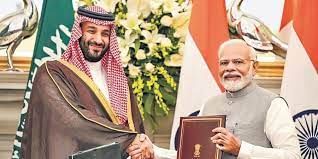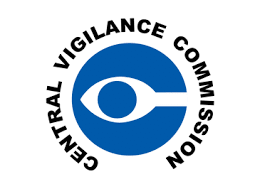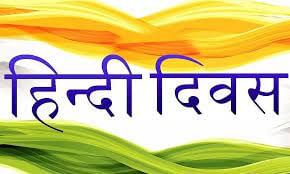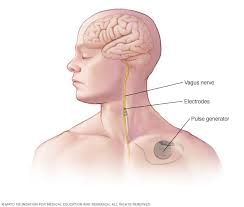UPSC Daily Current Affairs- 15th September 2023 | Current Affairs & Hindu Analysis: Daily, Weekly & Monthly PDF Download
India and Saudi’s Push for the West Coast Mega Refinery Project
Subject: International Relations

Why in News?
India and Saudi Arabia have renewed efforts to accelerate the long-pending 60-million-tonnes-per-annum (60 mtpa) west coast mega refinery project, which had faced multiple hurdles.
West Coast Mega Refinery Project
- The ambitious project to build a mega oil refinery and petrochemicals facility in Maharashtra’s Konkan belt, with participation from Saudi Arabia and the UAE, was first proposed in 2015.
- The project is stipulated to be established at Barsu village in Ratnagiri district of Maharashtra.
- IOC, BPCL, and HPCL, had already incorporated a joint venture (JV) — Ratnagiri Refinery & Petrochemicals (RRPCL) — to implement the project.
- It faced resistance from locals due to environmental concerns and shifting political equations in the state.
- Despite initial agreements and cost estimates of Rs 3 lakh crore, the project failed to take off as foreign partners hadn’t acquired stakes in the joint venture.
Recent Developments
- Around 15,000 acres of land had to be acquired for the project across 17 villages in the area.
- A joint monitoring committee will track the project’s progress, signaling renewed commitment.
- India and Saudi Arabia are keen to implement the project, which has earmarked funds of $50 billion.
Significance of the Project
- India is a significant consumer of crude oil, and its demand for petroleum products and petrochemicals is expected to grow substantially.
- India aims to increase its refining capacity from 250 mtpa to 450 mtpa, making it a key player in the global oil demand landscape.
- For Aramco and ADNOC, the project offers diversification, global expansion, risk mitigation, and access to a major oil market.
Future Options
- Realistic alternatives include scouting for alternative coastal sites in Maharashtra or considering another coastal state.
- A more drastic alternative is to split the proposed mega refinery into smaller units.
Source: The Hindu
Role and functions of the Central Vigilance Commission (CVC)
Subject: Polity and Governance

Why in News?
Recently the CVC has reconstituted the advisory board on Banking and Financial Frauds (ABBFF) that conducts the first level examination of bank frauds before recommendations or references are made to investigative by agencies such as Central Bureau of Investigation (CBI).
About Central Vigilance Commission (CVC):
- CVC are conceived to be the apex vigilance institution, free of control from any executive authority, monitoring all vigilance activity under the Central Government and advising various authorities in Central Government organizations in planning, executing, reviewing and reforming their vigilant work.
- The Parliament enacted Central Vigilance Commission Act, 2003 conferring statutory status on the CVC.
- Organization: The CVC has its own Secretariat, the Chief Technical Examiners’ Wing (CTE), and a wing of Commissioners for Departmental Inquiries (CDI).
- Appointment: The chairperson and the members are appointed by the President on the recommendations of a Committee consisting of the Prime Minister (Chairperson), the Minister of Home Affairs, and the Leader of the Opposition in the Lok Sabha.
- Term: The term of office of the chairperson and the members is four years from the date on which they enter their office or till they attain the age of 65 years, whichever is earlier.
- Salary and Allowances: The salary, allowances, and other service conditions of the Chief Vigilance Commissioner are similar to those of the Chairman of UPSC, and that of the Vigilance Commissioner are similar to those of the members of UPSC.
- Composition: CVC is a Multi-member Commission consisting of a Central Vigilance Commissioner (Chairperson) and not more than two Vigilance Commissioners (Members).
- Removal: The President can remove the chairperson or any other member from the office under the following circumstances:
- If the member is adjudged as insolvent.
- If the Central government holds him responsible for an offense involving moral turpitude or he is convicted for such an offense.
- engages during his term of office in any paid employment outside the duties of his office.
- If he is declared unfit by reason of infirmity of mind or body, by the President.
- The President can also remove the chairperson or any other member for proved misbehaviour or incapacity.
- In such cases, the President has to refer the matter to the Supreme Court for an enquiry.
- After the enquiry, if the Supreme Court upholds the cause of removal and advises so, then the President can remove him.
- Powers of Civil Court: It has all the powers of a Civil Court while conducting any inquiry. Its proceedings have judicial character.
- It can ask for information or report from authorities to exercise its mandate relating to vigilance and anti-corruption work.
- Advisory nature: After inquiry, it advises the Central Government or its authorities for further courses of action.
- Where the Central Government or any of its authorities does not agree with the advice of the CVC, it shall communicate the reasons to the CVC.
- Investigations: For investigation work, CVC has to depend on two external sources CBI and Chief Vigilance Officers (CVO).
- It submits its report to the President of India.
Role of CVC as a vigilant organization:
- Vigilant against corruption: One critical role is the creation of credible deterrence against corruption by promptly enforcing anti-corruption laws and regulations, including the Prevention of Corruption Act, of 1988.
- The CVC referred the 2G Spectrum Scam case to the CBI for inquiry and oversaw its advancement.
- Preventive measures: Preventive vigilance works on the “principle of Catch them before they hatch”.
- Implementing effective preventive measures to minimize the scope of corruption, thereby reducing opportunities for corrupt practices.
- Supervision of administration : The organization supervises the functioning of the Central Bureau of Investigation (CBI) and exercises superintendence over the vigilance administration of various central government ministries, departments, and organizations.
- This oversight helps maintain integrity and accountability within government bodies.
- Public awareness and ethical conduct: Raising public awareness is essential to inculcate ethical values and reduce society’s tolerance toward corruption.
- This aspect of the role focuses on educating and mobilizing the public against corrupt practices, fostering a culture of honesty and accountability.
Limitations of CVC:
- Very low conviction rate and delay in the investigation: This has reduced the impact of CVC and its effectiveness.
- There is huge delay in the cases that CVC handles, hence it does not act as an effective deterrent.
- Recommendatory body: CVC is often considered a powerless agency as it is treated as an advisory body only with no power to register criminal case against government officials or direct CBI to initiate inquiries against any officer of the level of Joint Secretary and above.
- The Decisions of the CVC are not binding on the organizations or ministries.
- Although CVC is “relatively independent” in its functioning, it neither has the resources nor the power to act on complaints of corruption.
- Organizational jurisdiction: In most cases, the domains and the jurisdiction of the organizations is not clear.
- CVC cannot initiate suo moto inquiries but can only act on complaints received from the public or referrals from other authorities.
Way Forward:
In the recent past, India has emerged as a progressive and vibrant economy with huge investments were made in country’s infrastructure; construction, retail and many other sectors in the government. This rapid growth in economy throws up CVCs’ challenges in the fight against the menace of corruption. Therefore, there is a need to strengthen the CVC’s powers, autonomy and resources to enable it to perform its role more efficiently and effectively.
Source: The Hindu
India-Russia Maritime Cooperation
Subject: International Relations
Why in News?
India and Russia discussed ways to widen maritime cooperation in the recently held meet for the Development of the Far East and the Arctic.
- During the meeting, both the leaders discussed wide range of items of maritime communication between India and Russia to widen maritime cooperation
Key Highlights of the meet
- Both sides agreed on the usage of new transport corridors like the Northern Sea Route (NSR) as well as the Eastern Maritime Corridor (EMC) between Vladivostok and Chennai.
- The Eastern Maritime Corridor is a proposed sea route between Chennai, India, and Vladivostok, Russia, passing through the Sea of Japan, the South China Sea, and the Malacca Strait.
- The potential cargo base for the alternate routes will be coking coal, oil, LNG and fertilizers which are present in sufficient quantities in the Far East.
- Establishment of India Russia Joint Maritime Commission to facilitate constructive discussion on various issues regarding development of the NSR.
- India and Russia agreed to train Indian seafarers in Polar and Arctic waters at the Russian Maritime Training Institute, named after GI Admiral Nevelsky, which is equipped with simulator training facilities, in Vladivostok, Russia.
Benefits of Northern Sea Route (NSR)
- The NSR is a global transport project. Its development can provide economic benefits to both Russia and non-regional states. For India, this is an opportunity to increase sales of shipbuilding products and gain income from participation in the general logistics business in northern latitudes.
Benefits of Eastern Maritime Corridor (EMC)
- EMC is estimated to reduce the time required to transport cargo between Indian and Russian Ports of the Far-East Region by up to 16 days.
- This will further open trade opportunities with Southeast Asian nations like Thailand, Vietnam, and Indonesia.
India-Russia Relations
- India and Russia have a history of strong strategic, military, economic, and diplomatic relationships.
- Political Relations:
- The Annual Summit meeting between the Prime Minister of India and the President of the Russian Federation is the highest institutionalized dialogue mechanism in the strategic partnership between India and Russia.
- So far 20 Annual Summit meetings have taken place alternatively in India and Russia.
- Intergovernmental Commissions:
- There is regular high-level interaction between the two countries.
- The IRIGC (India-Russia Intergovernmental Commission):
- It is the main body that conducts affairs at the governmental level between both countries. Both countries are members of international bodies including the UN, BRICS, G20 and SCO.
- Two Inter-Governmental Commissions:
- One on Trade, Economic, Scientific, Technological and Cultural Cooperation (IRIGC-TEC), co-chaired by EAM and the Russian DPM, and
- Another on Military-Technical Cooperation (IRIGC- MTC) co-chaired by Russian and Indian Defence Ministers, meet annually.
Eastern Economic Forum
- About: An international forum, organised each year in Vladivostok, Russia.
- Establishment: In 2015, by the decree of the President of the Russian Federation.
- Purpose: Platform for the discussion of key issues in the world economy, regional integration, Industrial & technological sectors.
- Far East: Resource-rich easternmost part of Russia; covers more than a third of the country’s territory (1/3rd of all coal reserves).
India & Far East
- In 2019 India announced a commitment to an “Act Far-East” policy.
- This policy is an important part of a special and privileged strategic partnership with Russia.
- India has also made significant investments in the Russian far east in the fields of pharmaceuticals and diamonds.
- India can also have cooperation in the mobility of talent. Indian talent has contributed to the development of many resource-rich regions of the world.
- The talent and professionalism of Indians can bring about rapid development in the Russian Far East.
India’s Stand on Russia’s War with Ukraine & way ahead
- India’s response to the Russian invasion of Ukraine has been distinctive among the major democracies and among U.S. strategic partners.
- Despite its discomfort with Moscow’s war, New Delhi has adopted studied public neutrality toward Russia.
- It has abstained from successive votes in the UN Security Council, General Assembly, and Human Rights Council that condemned Russian aggression in Ukraine and thus far has refused to openly call out Russia as the instigator of the crisis.
- India has been under immense indirect pressure from Western nations that have openly condemned Russia’s military aggression against Ukraine.
- India has been pressing for the resolution of the crisis through diplomacy and dialogue.
Source: PIB
Hindi Diwas and the Making of India’s Official Language
Subject: Polity and Governance

Why in News?
Hindi Diwas, celebrated on September 14th each year, holds a special place in India’s cultural and linguistic tapestry.
Hindi Diwas
- Official Language Selection: After gaining independence, India recognized the need for a unifying official language to facilitate communication between government departments and the public. On September 14, 1949, Hindi was chosen as the official language, as stipulated in Article 343 of the Indian Constitution.
- Pioneering Advocates: Leaders such as Seth Govind Das, Maithili Sharan Gupt, Kaka Kalelkar, and Beohar Rajendra Simha were instrumental in championing Hindi as the nation’s official language. Beohar Rajendra Simha’s birthday on September 14 became synonymous with Hindi Diwas.
Language Debate in the Constituent Assembly
- RV Dhulekar Advocates for Hindi: RV Dhulekar, a representative from Uttar Pradesh, passionately argued that Hindi should not only be the official language but also the national language. He asserted that Hindi had triumphed in a race among languages and deserved recognition.
- Frank Anthony’s Case for English: Frank Anthony, representing Central Provinces and Berar, made a compelling case for English. He emphasized that the knowledge of English, acquired over two centuries, was a valuable asset for India on the international stage.
- Pandit Lakshmi Kanta Maitra’s Push for Sanskrit: Pandit Lakshmi Kanta Maitra, who represented Bengal, advocated for Sanskrit as the national and official language. He argued that it was a revered language with rich heritage.
- Qazi Syed Karimuddin’s Support for Hindustani: Qazi Syed Karimuddin, also from Central Provinces and Berar, highlighted Mahatma Gandhi’s endorsement of Hindustani. He proposed that Hindustani, written in both Devanagari and Urdu scripts, should be the national language.
- T A Ramalingam Chettiar’s Perspective on Hindi: T A Ramalingam Chettiar, representing Madras, accepted Hindi as an official language due to its widespread use but questioned its claim as the national language. He argued that India had several national languages, each deserving equal recognition.
The Munshi-Ayyangar Formula
- The Constituent Assembly engaged in extensive deliberations over three days, resulting in the Munshi-Ayyangar formula.
- It was a compromise named after the drafting committee members K M Munshi and N Gopalaswamy Ayyangar.
- According to this formula, Article 343 of the Constitution adopted in 1950 stated that the official language of the Union would be Hindi in the Devanagari script.
- However, English would continue to be used for official purposes for fifteen years from the Constitution’s commencement.
Source: Indian Express
Carbon Border Adjustment Mechanism
Subject: Environment
Why in News?
India aims to protect domestic industry from EU’s Carbon Border Adjustment Mechanism (CBAM).
About:
- The government aims to take all necessary steps, including by setting up auto component parks using a combination of green energies, to protect Indian industry from any adverse impact of the European Union’s CBAM.
Carbon Border Adjustment Mechanism (CBAM):
- It is a tool to put a fair price on the carbon emitted during the production of carbon intensive goods and at most significant risk of carbon leakage like cement, iron and steel, aluminium, fertilisers, electricity and hydrogen that are entering the EU.
- 1. It will enter into force in its transitional phase as of 1 October 2023.
- The idea here is to avert the possibility of carbon leakage alongside encouraging producers in non-EU countries to green their manufacturing processes.
- The gradual introduction of the CBAM is aligned with the phase-out of the allocation of free allowances under the EU Emissions Trading System (ETS) to support the decarbonisation of EU industry.
Why are other countries worried?
- According to the United Nations Conference on Trade and Development (UNCTAD):
- Russia, China and Turkey were most exposed to the CBAM.
- India, Brazil and South Africa would be most affected among the developing countries.
- India exported steel and aluminium, contributing nearly 14% of its export mix for all products.
- Mozambique would be the most exposed least-developing country.
- Impact on India:
1. The EU is India’s third largest trade partner and the size of exports from India will invariably rise.
2. Scope of CBAM would expand beyond its current ambit to include other sectors as well. - India’s products have a higher carbon intensity than its European counterparts, the carbon tariffs imposed will be proportionally higher making Indian exports substantially uncompetitive.
1. International climate policies (including CBAM) will compel other countries to impose similar regulation eventually translating to ‘a significant impact’ on India’s trading relationships and balance of payments.
Way Forward:
- The high carbon emitting activities like manufacturing have been outsourced and low carbon emitting activities like branding and financing have been retained, affecting the global value and supply chains.
- Carbon emissions in traded goods and services comprise only 27% of global carbon emissions which indicates that the scope of international trade policy in achieving global green growth is limited.
- So, it is the domestic or the national policies which are going to be more effective than international rules.
Source: The Hindu
Vagus Nerve: Stimulation and Health Implications
Subject: Science and technology

Why in News?
There’s a growing buzz online about the vagus nerve—ways to stimulate it and the potential benefits for various health issues, from anxiety to obesity.
- Videos and devices abound, offering suggestions for vagus nerve stimulation.
- Recent research has even linked vagus nerve dysfunction to long COVID.
What is the Vagus Nerve?
- A Pair of Nerves: The vagus nerve consists of two nerves, one on each side of the body. They run from the brainstem through the neck, chest, and stomach.
- Part of the Parasympathetic Nervous System: These nerves are a vital component of the parasympathetic nervous system, responsible for relaxing and resting the body, regulating functions like heart rate, blood pressure, and digestion. They also play a role in the immune system.
Why is the Vagus Nerve being researched?
Several aspects make the vagus nerve a subject of intense research:
- Extensive Reach: The vagal nerves are the longest cranial nerves, connecting the brain to the large intestine and passing through or connecting with crucial areas in the neck, heart, lungs, abdomen, and digestive tract.
- Communication Hub: These nerves contain 75% of the nerve fibers of the parasympathetic nervous system, facilitating bidirectional communication between the brain and the body.
- Health Implications: Researchers explore how stimulating these “sensory superhighways” could trigger the parasympathetic nervous system and potentially benefit various health conditions.
Conditions Treated by Vagus Nerve Stimulation
- Epilepsy and Depression: Implantable vagus nerve stimulators are used to treat epilepsy and depression, particularly when conventional treatments are ineffective. These devices stimulate areas of the brain associated with seizures and mood regulation.
- Inflammation Regulation: The vagus nerve plays a role in regulating inflammation. Suppressing inflammation after an infection is resolved has implications for treating various conditions.
Vagus Nerve and Long COVID
- A study suggests a connection between vagus nerve dysfunction and post-COVID-19 condition (PCC) or long COVID. Patients with PCC exhibited symptoms related to vagus nerve dysfunction, indicating its potential role in the pathophysiology of PCC.
- Other research explores impaired vagal activity in long COVID patients and potential therapeutic approaches involving vagal nerve stimulation.
Natural Vagus Nerve Stimulation
Numerous natural methods are believed to stimulate the vagus nerve, including:
- Meditation: Focusing on longer exhales than inhales.
- Exercise: Engaging in physical activity.
- Massage: Techniques like reflexology.
- Music: Humming and singing.
- Cold Exposure: Placing a cold pack on your face or using icy water immersion.
Limitations
- Implanted vagus nerve stimulation is not a one-size-fits-all solution and should not replace conventional treatment.
- It serves as an adjunctive treatment for most conditions and requires further research to explore its potential therapeutic effects comprehensively.
- Vagus nerve stimulation devices should only be used under medical supervision due to their influence on heart rate and blood pressure.
- Different protocols must be followed, making clinic-based usage essential.
Source: The Hindu
Ian Wilmut: Cloning Pioneer
Subject: Science and Technology

Why in News?
AboutIan Wilmut, the cloning pioneer of Dolly the Sheep, the first mammal to be cloned from an adult cell, has died.
- Dolly the Sheep, initially referred to as ‘6LL3’, was part of a series of experiments that were trying to develop a better method for producing genetically modified livestock.
- These experiments were carried out by a team led by Professor Sir Ian Wilmut and were successful in cloning the first mammal from an adult cell at Edinburgh in 1996.
- It was considered as one of the greatest scientific breakthroughs in the 20th century.
- The researchers used a cell from the mammary gland of a dead adult sheep to create a new living animal.
- They stimulated the cell with electricity and added chemicals, which changed the adult DNA into an embryo.
- They then put this into an empty sheep’s egg before implanting it into a surrogate sheep.
What is a clone?
– It is a living organism (such as a plant or animal), which shares the same genetic information as another organism.
– However, their characteristics can be affected by random mutations which occur in their DNA.
1. Clones have the same DNA, but they may not look the same or behave in the same way.
Cloning of an animal:
– Somatic Cell Nuclear Transfer (SCNT), a cloning method, in which the nucleus of an egg cell is removed and replaced with the nucleus of a donor adult cell.
– Because 99.9% of the cell’s DNA is contained in the nucleus as chromosomal DNA (with the remaining 0.1% of DNA found in mitochondria), the resulting animal will share almost exactly the same DNA as the original donor cell.
Risks associated with cloning:
– Cloned embryos are more likely to be lost during pregnancy than normal embryos, which accounts for the low success rate of cloning.
– Animals with Large Offspring Syndrome (LOS) have growth defects and are considerably larger at birth than animals resulting from natural matings.
1. LOS is more often found in cloned animals from livestock species, such as sheep, than in other cloned animals.
– Mammals, even if they hit adulthood, have struggled with some adverse health effects that target the brain, heart, and liver, and they can even age prematurely.
- Dolly was the first mammal to be cloned from an adult cell, and proved that specialised cells could be used to create an exact copy of the animal they came from.
- It prompted other scientists to clone animals including dogs, cats, horses and bulls.
- It opened up a lot of possibilities in biology and medicine, including the development of personalised stem cells known as iPS cells.
Source: The Hindu
|
52 videos|5374 docs|1136 tests
|
















